Txakoli (chack oh lee), is not a grape varietal or wine producer, but a region (and a wine) of northern Spain framed by the Bay of Biscay to the north, Cantabria to the west, Rioja to the south and Navarra to the east. If you have ever visited the towns of Bilbao or San Sebastián you’ve been in the Txakoli region perhaps without knowing it.
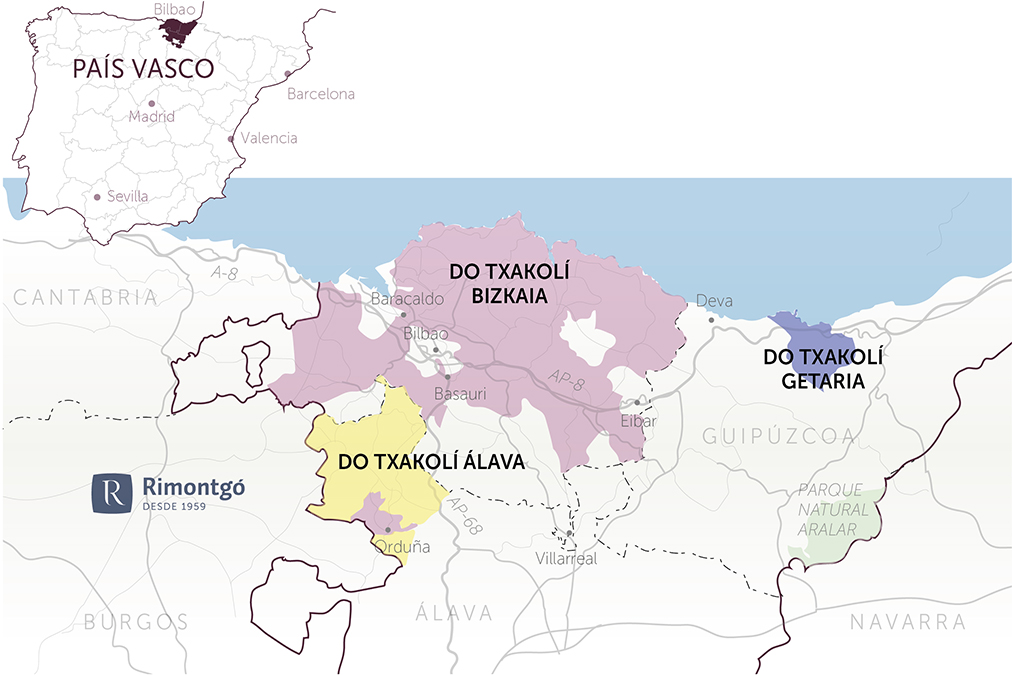
My visit to Txakoli marked Day 1 of a week-long exploration of the regions and wines of Txakoli and Rioja, organized by the Wine Scholar Guild. A group of 18 wine professionals and enthusiasts, accompanied by Master of Wine, Jonas Tofterup, sought to better understand and appreciate these remarkable wines. History, geology, climate, grape varieties, viticulture and vinification techniques all made for a deeper dive than simply tasting, spitting and moving to the next tasting room. More like a grad school lab course, but decidedly more pleasurable.
Day 1 focused on two subregions (or DOs – Denominación de Origin) of Txakoli: DO Txakoli Bizkaiko and DO Txakoli Alava. The first encompasses coastal Bilboa and surroundings; the second is inland and due south of Bilboa. One famous Spanish wine writer said, both produce “. . . wines so distinctive . . . you can spot them in a blind tasting”. Mostly white, Txakolis are noted for their moderate alcohol, freshness, bracing acidity and, in many instances, a touch of spritz . . . characteristics that are trending, especially in the US, and attracting an increasing amount of attention from both wine lovers and wine writers.
DO Txakoli Avala (sometimes listed as DO Arabako Txakolina)
With San Sebastián as home base, our group bussed about 1-1/2 hours to Txakoli Avala, the smaller of the two subregions visited. A standout among the 10 or so wineries in this region is Astobiza.
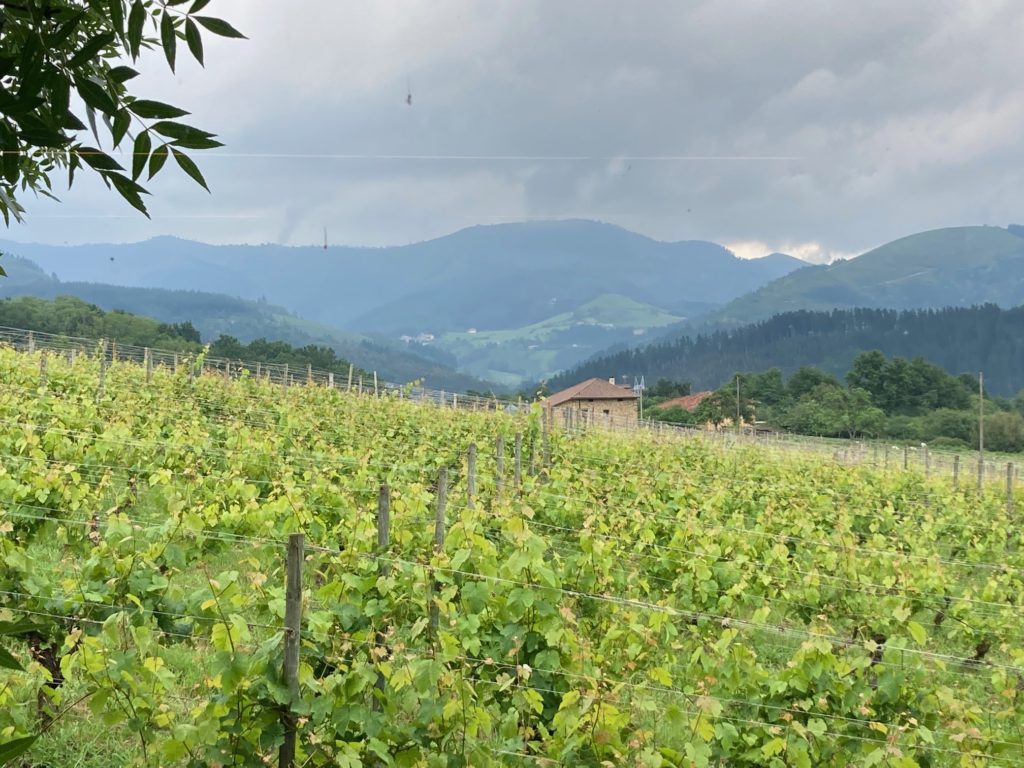
The Astobiza winery, housed in an 18th century lordship’s house, produces wine from 21 acres of the Hondarrabi Zuri grape planted at a relatively high elevation (300 meters) – offering protection from humidity and frost. Dry farming, low production, hand harvesting, and estate bottling articulate a regimen resulting in aromatic, fresh wines with lively stone fruit, all from a single vineyard.
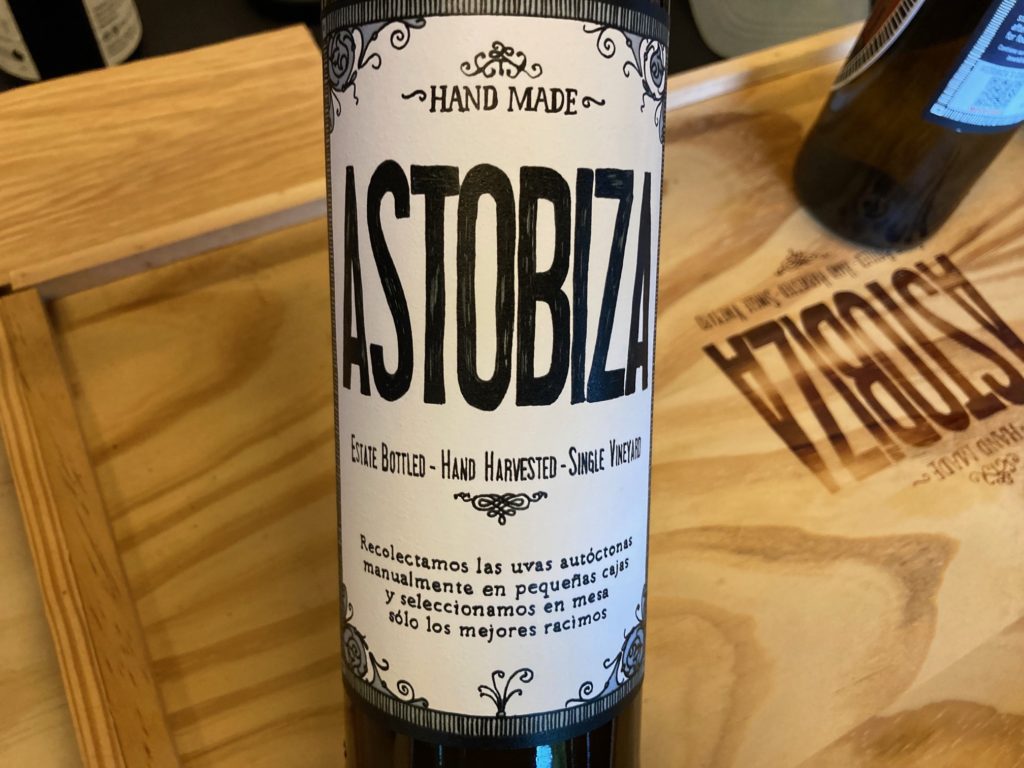
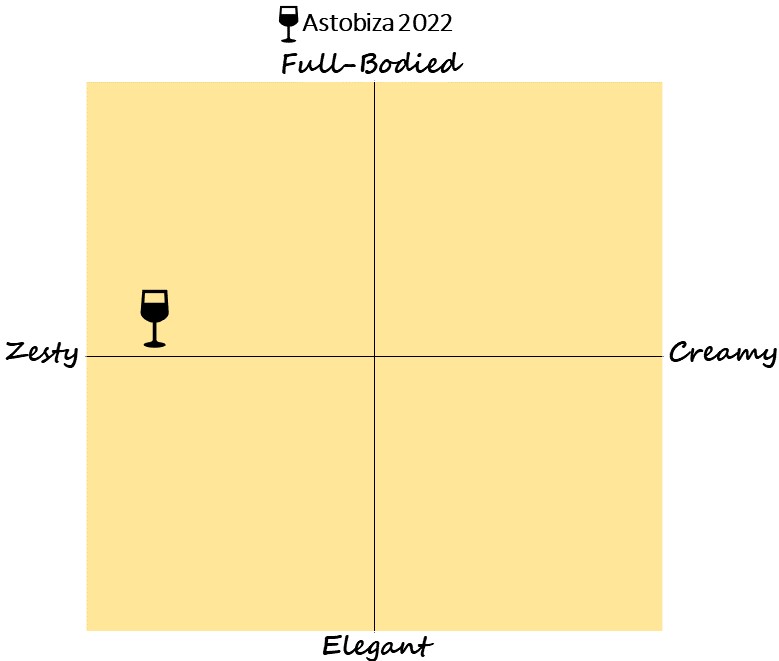
Astobiza 2022 ($25), referred to as the winery’s “young” bottling, is made from their youngest parcels (about 25 yrs old) of the Hondarrabi Zuri grape. Three-hour cold maceration prior to crush and 3 to 4 months in bottle all contribute to the minerality and freshness of the finished wine. I love this Txakoli for its youthful acidity and food pairing potential with shellfish, anchovy, oily fishes (farm-raised salmon, tuna) and wide variety of tapas.
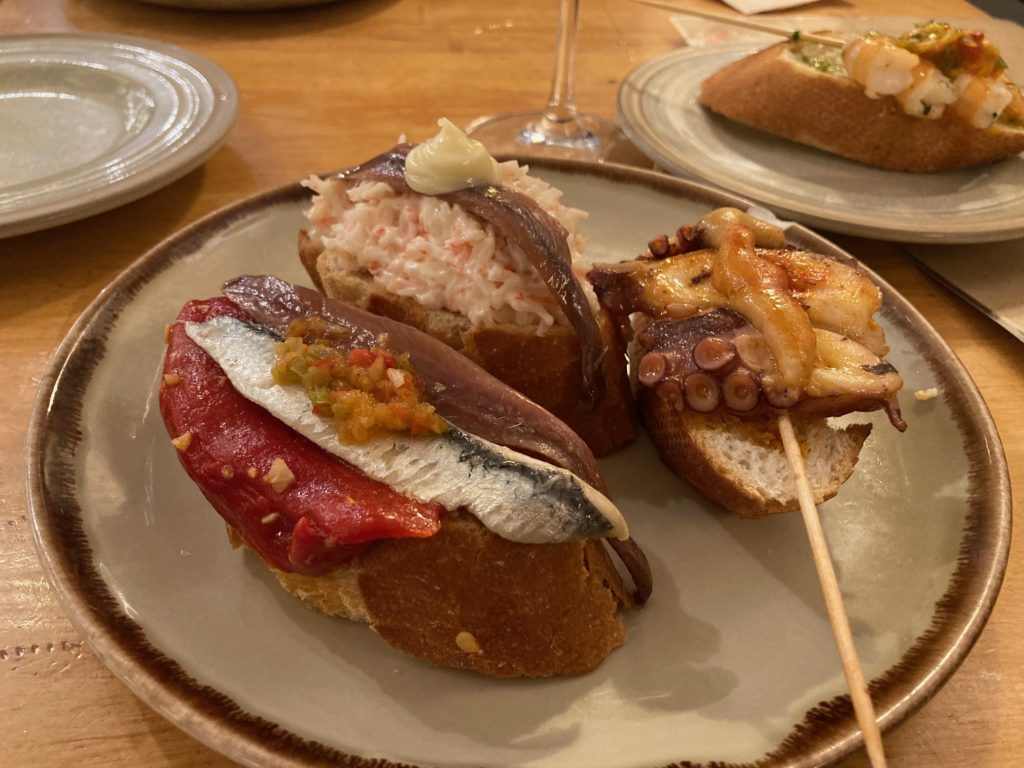
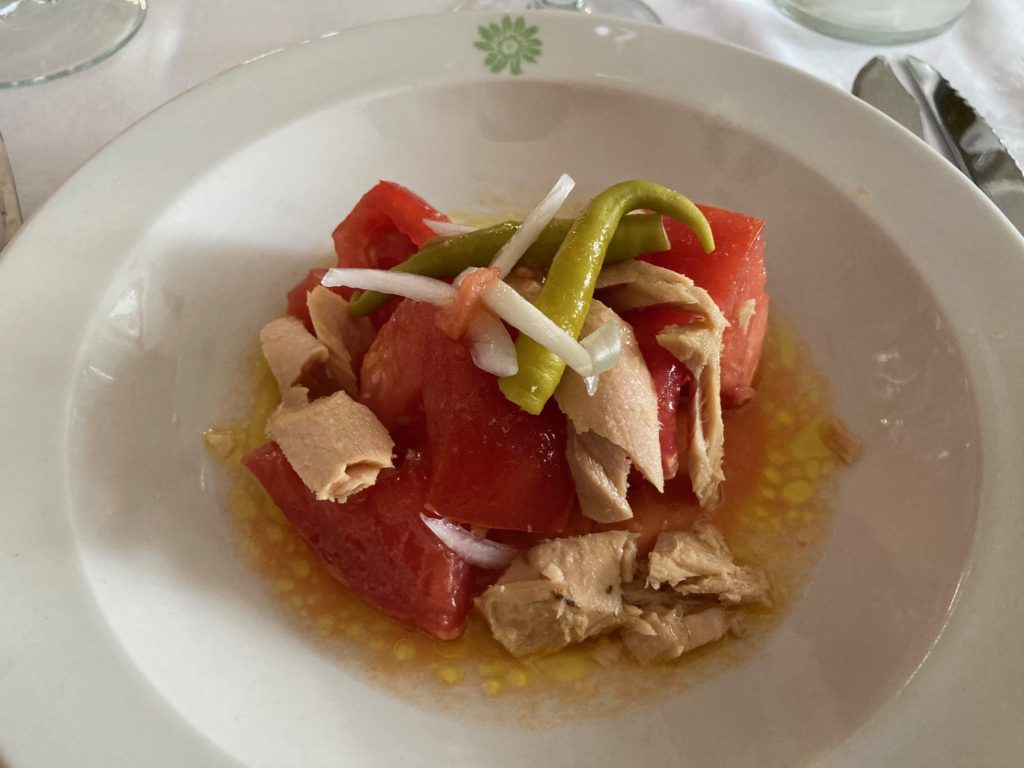
A widely available Txakoli (check Total Wine and More near you) from the Txakoli Getaria subregion is Txomin Etxaniz ($21). Offering the same flavor profile as the Astobiza, the Txomin Etxaniz serves up a little spritz or effervescence, adding to the refreshment.
DO Txakoli Bizkaia (sometimes listed as Bizkaiko Txakolina)
Following lunch, the group motored north toward Bilbao to check out the Bizkaia producer Itsasmendi. Considerably larger than Astobiza, Itsasmendi has about 75 acres under vine, with Hondarrabi Zuri and Hondarrabi Zuri Zerratie (a red grape) as the principal varietals, including 5 acres of Riesling.
Designated as Itsasmendi 7 ($31), aged on its lees for 7 months, the wine sees only stainless steel (no oak) to preserve the freshness and minerality of the Hondarrabi Zuri grape. In contrast to the Astobiza, the Itsasmendi 7 was a bit creamier, likely due to the lees aging, the blending of Riesling (about 20%), and the fact that we were tasting a wine with 2 more years of bottle age. Beautifully balanced, with an aging potential of 3-4 years, this wine should definitely be on your buy list.
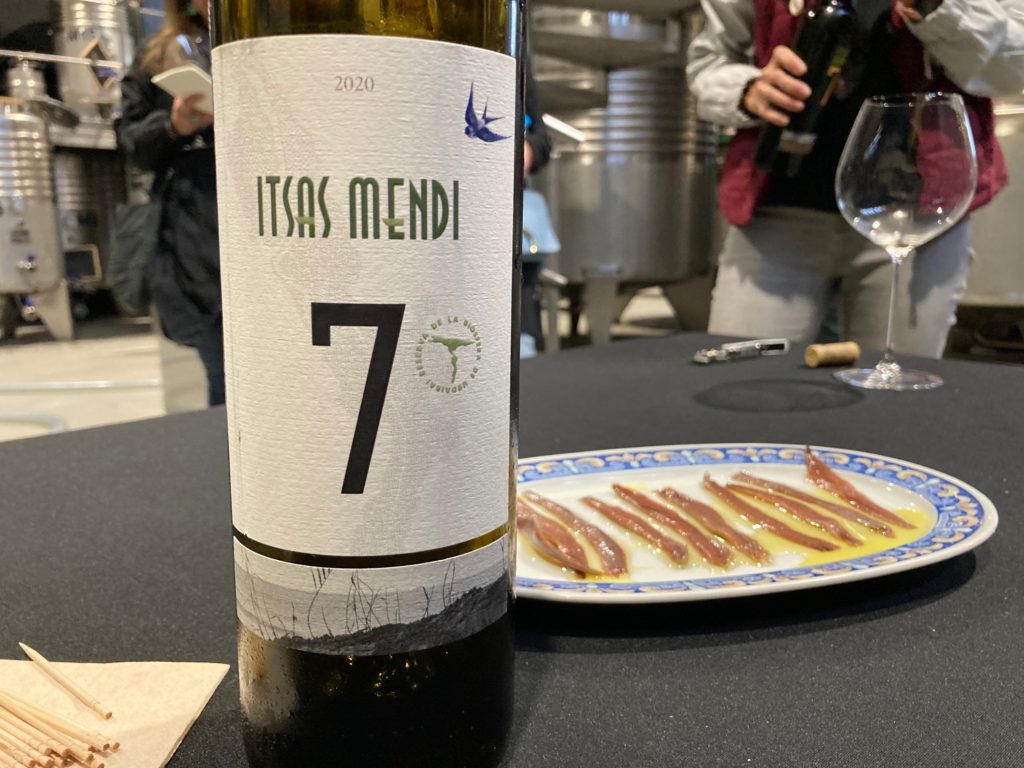
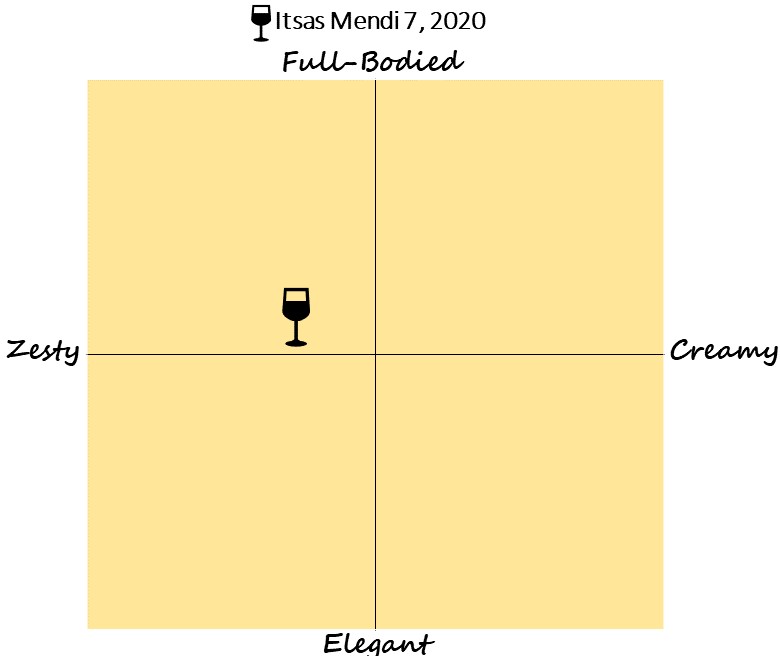
Just as tapas (or pintxos) have evolved from a simple speared olive & anchovy, so too Astobiza and Itsasmendi have shown us the great potential of the Hondarrati Zuri grape. If you enjoy Albariño, Vinho Verde, or Sauvignon Blanc, don’t let these Txakoli wines go unexplored . Salud!
Jim Berges says
So glad you finally got your trip to this amazing wine and food Mecca, we enjoyed a lot of white Txakoli when we were there! And the tapas, oh my!
Steven says
Thanks for the comment, James. Looking forward to seeing you soon.
Bruce says
I don’t know about the wine (I struggle with names that I can’t pronounce), but the crab and anchovy and anchovy and pepper tapas look terrific. Salud back!
Steven says
Thanks for commenting, Bruce. Hope all is well.
Wilson McTavish Zildjian says
Yesterday we had our first-ever spontaneous guest request for a bottle of Txakolina, as opposed to the other way around, where we hand-sell it. Articles like this are a great help!
Steven says
Thanks for commenting, Wilson. Very happy to spread the word about these underappreciated wines. Tell me about your business – retailer? restaurant? distributor?